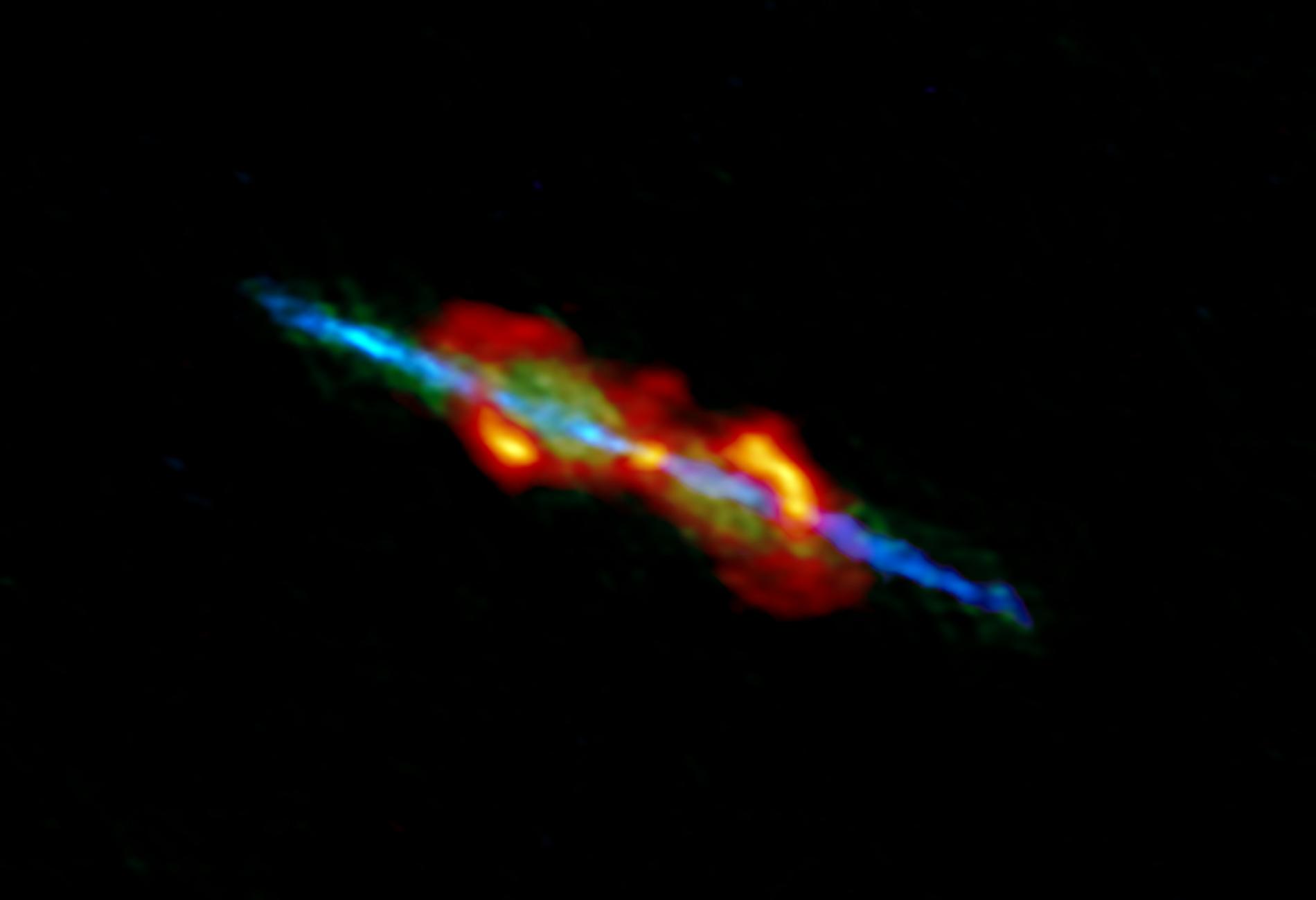The metamorphosis of a star in the final phases of its life
ALMA radiotelescope captured a star in its evolution towards a planetary nebula
All stars with a mass less than eight times that of the Sun will end their life as planetary nebulae, formed by a white dwarf star -the "peeled" core the star after the expulsion of its outer layers- surrounded by a fluorescent envelope. These nebulae may have spherical, bipolar or complex shapes, but it is still unknown why one form or another develops. Now, an international group of astronomers has observed an old star, the red giant W43A, in the process of metamorphosis into planetary nebula, a key moment in the life of low-mass stars.

The ALMA observatory (Atacama Large Millimeter / submillimeter Array) has shown that W43A shows a high-velocity bipolar jet of material -between 175 and 130 kilometers per second- which is colliding with the surrounding material and sculpting a bipolar shell in it. ALMA has thus captured the moment when spherical symmetry is lost and a complex morphology develops.
"The process of formation of a bipolar or multipolar nebula is, today, an open problem in studies of stellar evolution -says José Francisco Gómez, a researcher at the Institute of Astrophysics of Andalusia (IAA-CSIC) who is participating in the work-. We are increasingly convinced that at the origin of these forms are the cavities that the jets generate in the envelope material expelled by the star in previous stages, which is denser and slower than that of the jets".
It is estimated that both the jets and the shell are about sixty years old, so they were created simultaneously and in a short period of time. "Considering the youth of the jets in relation to the lifetime of a star, we can say that we are witnessing the 'exact moment' at which the jets have begun to sculpt the surrounding gas," explains Daniel Tafoya, a researcher at the University of Chalmers (Sweden) who is leading the study. “Furthermore, and unlike what we usually see in astrophysical phenomena, we are looking at a process that a human being can follow throughout his life".
In fact, the ALMA image clearly traces the distribution of the gas and dust clouds entrained by the jets. The team assumes that this entrainment is key to the formation of a bipolar planetary nebula, and proposes the following scenario: the aging star expels, in a first phase, the gas from its outer layers spherically, so that the core is left naked. If the star has a companion, the gas from the companion is poured over the core of the dying star, and a percentage of this new material forms the jets, which will alter the morphology of the material around the star.
FIFTEEN OUT OF A HUNDRED BILLION
Thus, whether or not the star has a partner is a key factor in determining the structure of the resulting planetary nebula. This is a scenario proposed previously to explain the rupture of the spherical symmetry in the planetary nebulae, something that must occur in the phases immediately prior to their formation.
However, this beginning is brief, and is obscured by the gas and dust expelled when the material is released from the star's envelope, so that its observation is very complicated.
"W43A is a peculiar object classified as a 'water fountain', an aged star showing the characteristic radio emission of water vapour molecules. This radio signal reveals the region in which the jets interact with the surrounding material", says Hiroshi Imai, a researcher at Kagoshima University in Japan who is participating in the work. “The jet shows lumps, or denser regions, that point to the existence of a companion star with an eccentric orbit: when the stars get closer, the companion loses more material and the jet changes in intensity”.
"Among the hundred billion stars in the Milky Way, we have so far identified only fifteen water fountains. This is probably because the life span of the jets is quite short, so we are very lucky to see such rare objects," concludes José Francisco Gómez (IAA-CSIC).
D. Tafoya et al. "Shaping the Envelope of the Asymptotic Giant Branch Star W43A with Collimated Fast Jet". The Astrophysical Journal Letters, 890:L14 (Feb 2020) DOI: https://doi.org/10.3847/2041-8213/ab70b8
Instituto de Astrofísica de Andalucía (IAA-CSIC)
Unidad de Divulgación y Comunicación
Silbia López de Lacalle - sll[arroba]iaa.es - 958230676
https://www.iaa.csic.es
https://divulgacion.iaa.csic.es

